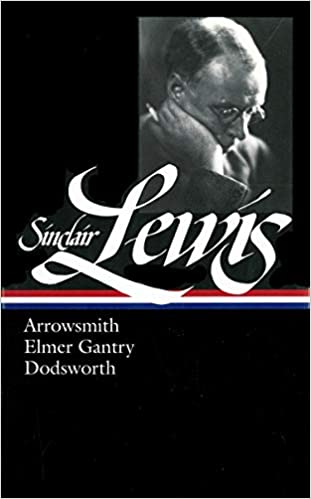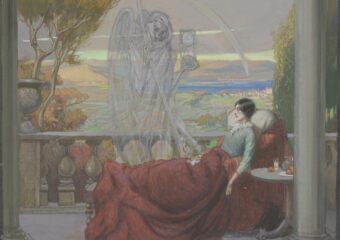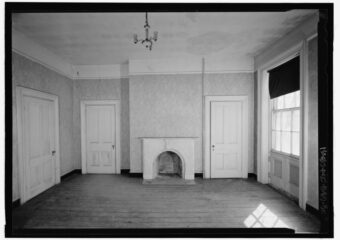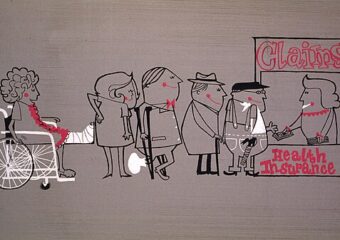Sinclair Lewis
In: Sinclair Lewis: Arrowsmith, Elmer Gantry, Dodsworth
Richard Lingeman (editor)
Library Classics of the United States
New York
2002
471 pages
According to the Art:
In this novel published in 1925, Sinclair Lewis offers a view of how human folly complicates application of scientific research findings, medical standards of practice, public health principles, public administration fundamentals, and good governance. He uses medical practice, public health administration, and an infectious epidemic as his case studies. His renderings remain relevant when read ninety-five years after publication.
Synopsis:
Arrowsmith, a novel first published in 1925, is the story of Martin Arrowsmith from the time he was fourteen-years-old in 1897 through a time when he required “almost middle-aged glasses.” (p. 468) We first encounter young Arrowsmith reading Gray’s Anatomy in Doc Vickerson’s office. Five years later, he leaves his small, Midwestern hometown for the state university, where he completes both an undergraduate degree in general studies and a degree in medicine. There he falls under the spell of laboratory science and research, and under the mentorship of the prominent researcher, Max Gottlieb. Arrowsmith would eventually achieve his goal to devote his life to research free of any encumbrances, personal or professional, but not before he spends time in medical practices, municipal public health, and a private research institution. At each of these stops along the way, the pull from research never abated and was amplified by the push from the unseemly and disagreeable aspects of these other roles.
Practical realities after graduating medical school diverted Arrowsmith from research and into a private medical practice in the small, rural hometown of the woman he would soon marry (Leora). Here he first encounters the “business” of medical practice, which involved competing with other practices and currying favor with important people to generate a patient roster. This realization, along with overbearing in-laws, was shocking and unbearable. He escapes this predicament when he takes a position as a public health official in a medium-size city. While this position brought him closer to research, he is not free of the business of medical practices, and he further finds that public health imperatives can clash with priorities government officials set. His idealistic bubble burst, “I never want to see a laboratory or a public health office again. I’m done with everything but making money,” (p. 282) he joins a medical school classmate in a large, urban, and lucrative private practice as a pathologist. This situation is no more bearable than the others. He could not shake off his drive for research or get used to the stench of commercialism attached to private practice. Arrowsmith reunites with Gottlieb, who is then at a private and prestigious research institution in New York City. He goes there hoping he can conduct his research on bacteriophages (phages) sheltered from the objectionable and counterproductive forces he has had to contend with in all the other positions.
Arrowsmith’s phage experiments at the Institute look promising for the treatment of bacterial infections. This is a major discovery with important implications. The Institute, however, learns that Arrowsmith is not the first to make this discovery and so the Institute would receive no glory from just an announcement. A raging epidemic of bubonic plague on an island in the West Indies (St. Hubert) comes to light about this time. The Institute sends Arrowsmith there to test his phage seeing the opportunity to cure a lethal infectious epidemic and to make history. He goes to the island accompanied by Leora and his colleague, Gustaf Sondelius.
Gottlieb beseeches him to maintain the strict research principals needed to discern the effectiveness of phages, which would mean withholding the treatment from a segment of the population as a control. He intends to apply just this approach. But, this approach pits him against island government and public health officials who want to treat all people, island residents demanding treatment, objections of some of his colleagues, and his own qualms once he sees all the death and suffering the disease is causing, which includes the loss of Leora and Sondelius. He capitulates and begins administering phage to all comers until he regains his scientific bearing, and with the support of a local advocate for controlled experimentation, he withholds treatment from a certain segment of the population. The outcomes are promising, but muddled as a result of mixed research methods and a waning infection rate. Notwithstanding, the Institute twists the indeterminate results into a great advance in the treatment of the plague; Arrowsmith is aghast.
Arrowsmith returns to the Institute and to fame and fortune. His fame comes from the Institute’s spin on the results and his fortune from marrying his second wife. Neither could sustain him as he yearns for research for the sake of research and nothing else, including his wife and child. He followed the path of Gottlieb,
he who had lived to study the methods of immunizing mankind against disease had little interest in actually using those methods. He was like a fabulous painter, so contemptuous of popular taste that after a lifetime of creation he should destroy everything he had done, lest it be marred and mocked by the dull eyes of the crowd.
p. 365
This path took Arrowsmith to a remote location in Vermont where he could pursue his science away from the dull eyes of the crowd.
Analysis:
Many of the problems and predicaments portrayed in this novel will be familiar to those who read it ninety-five years after its publication in 1925. Lewis demonstrates how problems with apparent solutions based on science, public health principles, public administration fundamentals, and good governance, are often hindered by a multitude of factors. Lewis is more satirical in his approach than didactic as he focuses on human folly as the source for many of these factors. He highlights these three in particular: (1) business aspects of medical practice; (2) contested priorities among health care providers, government leaders, public health officials, scientists, and the general public; and (3) moral choices that can arise in public health emergencies.
When Arrowsmith is in a small-town private medical practice, he becomes aware that it has to run as a business, which means competing with other practices and becoming a “commercialist” to generate patient interest. It meant putting the business needs of the practice before patient needs.
He told himself that however much he might relieve the sick, essentially he was a business man, in rivalry with Dr. Winter of Leopolis and Dr. Hesselink of Groningen; that though they might be honest, honesty and healing were less their purpose than making money. (p. 178)
p. 178
While most small medical practices have gone the way of large multi-special practices and hospital systems in 2020, these organizations have pronounced business interests that expand on the same concerns Lewis is pointing to in the novel. The business aspects now just play out between competing sales forces and dueling lobbyists rather than individual practitioners.
Lewis introduces more complexity to the problems he portrays when he puts Arrowsmith in a role as a public health official. This environment now involves political and governance dimensions. Arrowsmith takes on some important public health initiatives that could prevent many people in the city from getting sick with serious infections. The actions he took affected more than just local physicians (who wanted to see fewer free clinics) to include business owners, churches, teachers, local press, citizens, and thus politicians. Too many of Arrowsmith’s actions were counter to the interests of too many of these constituencies, which he learned about from an ally who told him there was nothing he could do “if the city doesn’t care.” (p. 280) Readers in 2020 could recognize this attitude in the reaction of the U.S. president to pressure for more coronavirus testing: “In a way, by doing all of this testing, we make ourselves look bad.”
Lewis adds more complexity yet when he situates Arrowsmith at the private research institute, which sends him to the West Indies to test his possible cure for bubonic plague. Here Lewis brings moral dimensions to life and death decisions. These begin to manifest as he’s about to leave for the island when Gottlieb tries to steel him against pressures likely to come from the humanitarian crisis he will witness.
You must pity, oh, so much the generation after generation yet to come that you can refuse to let yourself indulge in pity for the men you will see dying…Let nothing, neither beautiful pity nor fear of your own death, keep you from making this plague experiment complete. (p. 372)
p. 372
“Martin swore…that he would determine forever the value of phage by the contrast between patients treated and untreated, and so, perhaps, end all plague forever; he would harden his heart and keep clear his eyes.” (p. 366) But, “Sondelius still insisted that in this crisis mere experimentation was heartless…” (p. 368), and Arrowsmith himself had doubts about Gottlieb’s credibility given that “in his secluded innocence, [he] had not realized what it meant to gain leave to experiment amid the hysteria of an epidemic.” (p. 393)
Lewis thus sets up a dichotomous moral question about whether it is better “to give up the possible saving of millions for the immediate saving of thousands.” (p. 392). But, he shows that people may not adjudicate it as a dichotomous choice when Arrowsmith, affected by the opposing arguments and by personal experience, is unable to choose one of the two options, and so chooses both options. In so doing, he loses a chance to learn whether everyone or no one with bubonic plague should be treated with phage. His choice also creates a moral challenge for the Institute between reporting inconclusive findings to inform clinicians and policymakers or contorting the inconclusive findings to serve the Institute’s vanity project. The decisions Arrowsmith and the Institute make, as history shows and as Lewis constructs, are a feature of responses to epidemics, not a bug.
Scientists and health care professionals want to save every life. Economists want to save every dollar. General populations want everything available. Reconciling these understandable but extreme positions is left to government leaders and public administration officials. Through this novel, Lewis renders the human folly that enters into these reconciliations in ways that can thwart or corrupt them.
Also:
Many correspondences exist between the part about the plague on the fictional island of St. Hubert and the coronavirus pandemic of 2020. I have paired corresponding quotes from the novel and from U.S. government officials, mostly presidential, and posted them here.



